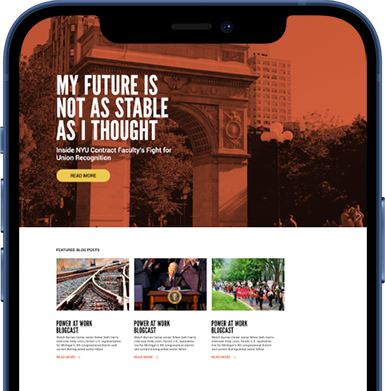“Smile and have fun”? Are those the words that will lead to student-athletes at private universities and colleges being classified as “employees” who are protected by the National Labor Relations Act (Act) and able to organize unions and bargain with their employer schools? Or will those words spark an even broader and more important change in labor law?
We will learn the answers to those questions over the next several months when an unfair labor practice (ULP) complaint filed by the NLRB’s Regional Director against the University of Southern California, the Pac-12 Conference (in which USC plays its football and basketball games), and the National Collegiate Athletic Association is adjudicated by the National Labor Relations Board and, very likely, the U.S. Court of Appeals. The complaint alleges, among other things, that these “respondents” committed ULPs by illegally misclassifying their student-athletes as “non-employees” and giving them the “you-must-smile” direction quoted at the beginning of this post. This direction, and other directions about student-athletes should communicate, interfere with these athlete-employees’ right to organize, according to the complaint.
The first allegation is more momentous than the second. In part, that’s because it raises two foundational issues. The first issue extends well beyond college sports: is misclassifying “employees” as “non-employees” an independent violation of the law? The answer to this question should be an easy “yes.” In one action, employers misclassifying employees as something other than “employees” deprives them of all their rights and protections under the Act: the rights to organize and bargain collectively, the right to engage in concerted activity for mutual aid or protection (even if not organizing a union), and the protection against retaliation by their employers, among others. The Act defines employer actions that "interfere with, restrain, or coerce employees in the exercise” of these rights as a ULP. The fact that an employer cloaks its interference and restraint in legal language or its purported business model does not change the fact that misclassification is interference with and restraint of workers’ rights. The NLRB’s General Counsel issued a memorandum two years ago making clear that she agrees.
The NLRB declaring employee misclassification to be a ULP would be a thunderclap across a host of industries including construction, health care, and trucking in which the practice is believed to be common. Expect unions operating in those industries to begin filing an avalanche of complaints against employers whose employees they are trying to organize or employers that are competing with unionized firms. The NLRB’s decision may even open the door to complaints against online platform transportation companies like Uber, Lyft, and Door Dash that have made “independent contractor” status for their drivers a core part of their businesses. These drivers would not have to begin the process of organizing a union or suffer some kind of retaliation or discrimination in order to bring a complaint to the NLRB. The misclassification alone would be enough to justify a complaint.
You may want to read an earlier related post about California litigation over Proposition 22 that could open the door to unions organized under state law for these same drivers.
The second issue is industry-specific: are student-athletes “employees”? Although the NLRB is currently formulating a decision that is likely to broaden the definition of “employee” for labor law coverage purposes, it likely will not affect the NLRB’s consideration of student-athletes’ status. The Board’s forthcoming decision will clarify the line between “employee” and “independent contractor” statuses. There is no reasonable argument that student-athletes are independent contractors.
The relevant line for student-workers at private-sector colleges and universities in the past was drawn between “employee” and “student.” For a portion of the Act’s history, students were categorically excluded from labor law rights and protections. This line drawing depended upon deeply flawed reasoning unsupported by the Act’s text that found students’ relationships with their employer-schools to be “primarily educational.” For this reason, they could not be employees. The NLRB rejected this line that was manufactured out of thin air. Its Columbia University decision involving a UAW organizing drive among graduate student assistants in 2016 put the issue to rest. Students can be “employees,” if they satisfy the factors in the common law “employee” test that Congress incorporated into the Act.
Will student-athletes satisfy the common-law test? The Board will have to decide, but here’s a cheat sheet so you can do the math for yourself:
- Do their schools exercise control over the details of their work? Yes.
- Are these student-athletes engaged in a distinct occupation or business? Certainly.
- Is the work of that occupation usually done under the direction of the employer? In team sports, that’s why they have coaches. Hard yes.
- Does the particular occupation require skill? Definitely.
- Does the employer supply the instrumentalities, tools, and place of work for the person doing the work? To the tune of millions of dollars. Yes.
- What is the length of time the person is employed? Ranges from one to four years. That’s long enough for employment.
- What is the method of payment: time or by the job? Scholarships and stipends are paid according to time, which is characteristic of employment.
- Is the work part of the regular business of the employer? In Division 1, inarguably.
- Do the parties believe they are creating an employment relationship? Yes for the student-athletes, no for the colleges and universities. A draw.
- Are the colleges in the business of college sports? See the answer above.
Final score: Student-athletes 9, colleges and universities 1. I think we know who should win when that’s the score.

